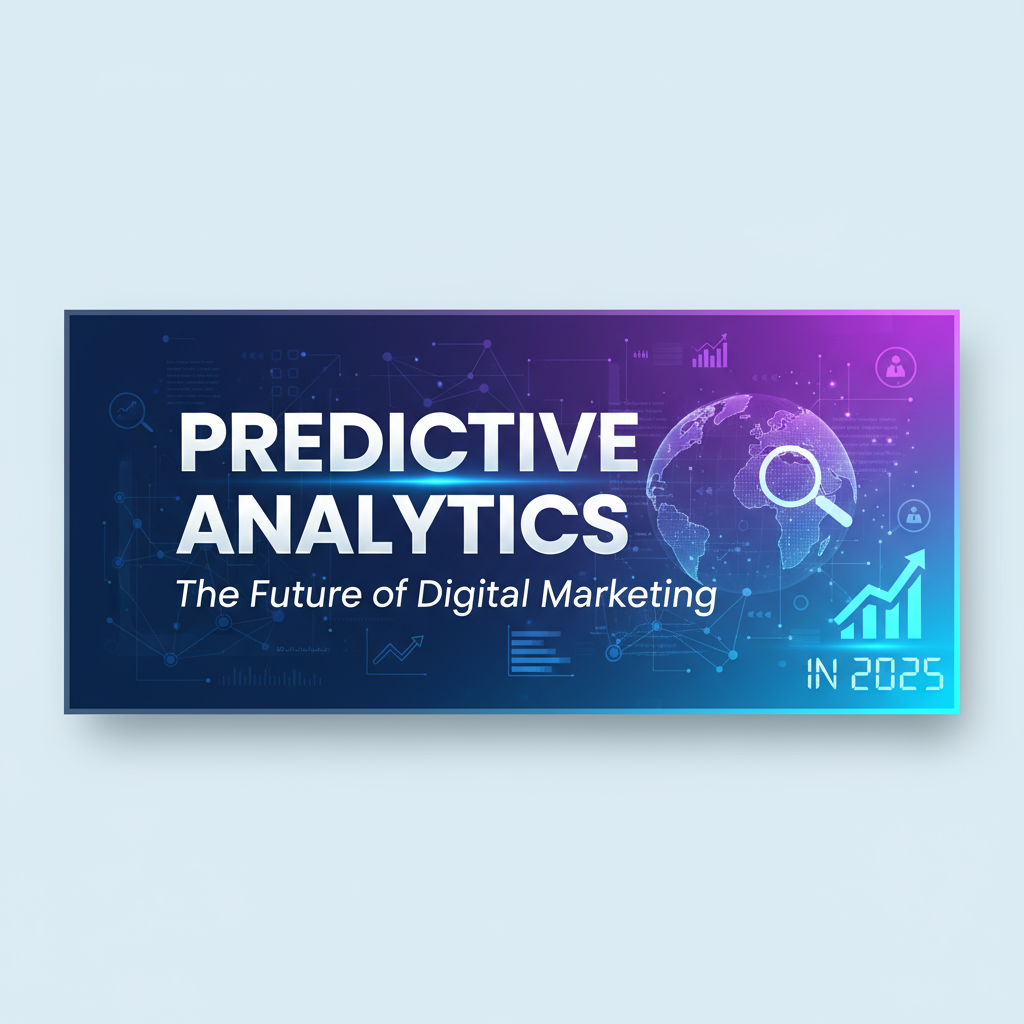Introduction
The digital marketing landscape is evolving faster than ever. With the rise of AI, machine learning, and big data, marketers now have the power to not just react to consumer behavior but to predict it. Predictive analytics has emerged as one of the most transformative technologies, enabling brands to anticipate customer needs, personalize experiences, and optimize campaigns with greater precision.
In 2025, predictive analytics is no longer optional — it’s the cornerstone of competitive digital marketing. This blog will explore what predictive analytics is, why it matters, the challenges marketers face, strategies to implement it effectively, and the future trends shaping its role in digital marketing.
What is Predictive Analytics in Digital Marketing?
Predictive analytics uses historical data, machine learning algorithms, and statistical models to forecast future outcomes. In digital marketing, it empowers brands to anticipate customer behavior — from purchase intent to churn risk — and adjust strategies in real time.
📊 Example: A B2B SaaS company can use predictive models to identify high-value leads likely to convert, allowing the sales team to focus on accounts with the highest ROI.
According to MarketsandMarkets, the global predictive analytics market is expected to surpass $28 billion by 2026, signaling its growing role in business strategies.
Challenges in Predictive Analytics for Marketers
While predictive analytics offers incredible potential, implementing it comes with challenges:
- Data Silos: Many companies still struggle to unify customer data across channels.
- Complex Tools: Not all marketing teams have the skills to operate advanced AI-driven platforms.
- Data Privacy: Stricter regulations (GDPR, CCPA) require marketers to balance personalization with compliance.
- Bias in Models: Poor data quality can lead to inaccurate predictions.
📌 Real-World Example: A retail brand using predictive analytics for personalized recommendations faced backlash when customer privacy was compromised due to lack of transparency.
Proven Strategies to Leverage Predictive Analytics in 2025
To maximize impact, marketers should adopt these strategies:
1. Customer Segmentation and Targeting
Use predictive models to group customers based on purchase intent, behavior, and lifecycle stage. This helps deliver hyper-personalized campaigns.
2. Lead Scoring for B2B Marketing
Integrate predictive analytics into your CRM to identify which leads are most likely to convert. Platforms like Salesforce Einstein and HubSpot leverage predictive scoring to prioritize sales opportunities.
3. Personalized Recommendations
E-commerce and SaaS companies can use predictive engines to suggest products or content tailored to each user’s preferences.
4. Churn Prediction
Predictive analytics can flag customers at risk of leaving, enabling brands to run targeted retention campaigns.
5. Optimizing Campaign Spend
AI-driven models can forecast ROI for each channel, helping marketers allocate budget where it drives the most conversions.
Trends and the Future of Predictive Analytics in Digital Marketing
Looking ahead, several trends will redefine how predictive analytics shapes marketing in 2025 and beyond:
- AI Agents in Marketing: Autonomous AI tools will make predictive insights actionable in real time.
- Real-Time Decisioning: Predictive analytics will shift from batch data analysis to instant insights, enabling adaptive campaigns.
- Integration with ABM: Predictive models will power account-based marketing by identifying high-value accounts with greater accuracy.
- Privacy-First Predictions: With growing emphasis on data protection, predictive models will rely more on first-party data.
Pro Tips & Bonus Insights
- Start small by applying predictive analytics to one campaign before scaling.
- Use visualization tools (like Tableau or Power BI) to interpret predictive insights effectively.
- Collaborate with data science teams for better model accuracy.
- Combine predictive analytics with marketing automation for maximum efficiency.
Conclusion
Predictive analytics is revolutionizing digital marketing by shifting strategies from reactive to proactive. In 2025, brands that harness predictive insights will be able to anticipate customer needs, personalize experiences, and maximize ROI with precision.
🚀 The future belongs to marketers who can transform data into foresight. Are you ready to integrate predictive analytics into your strategy?
